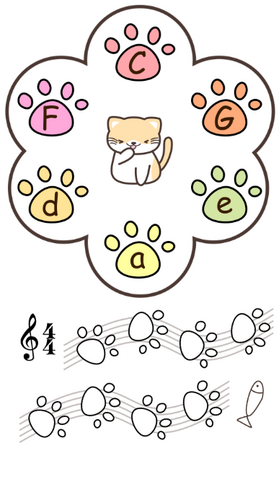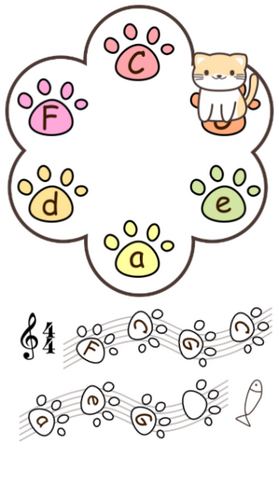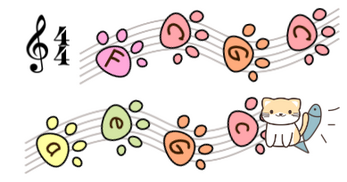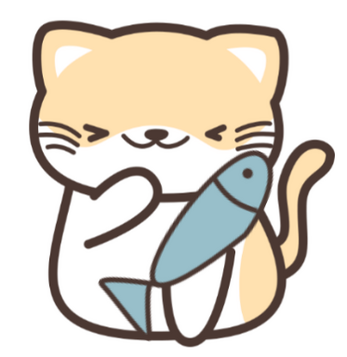
Cat Composer
A downloadable game for Windows
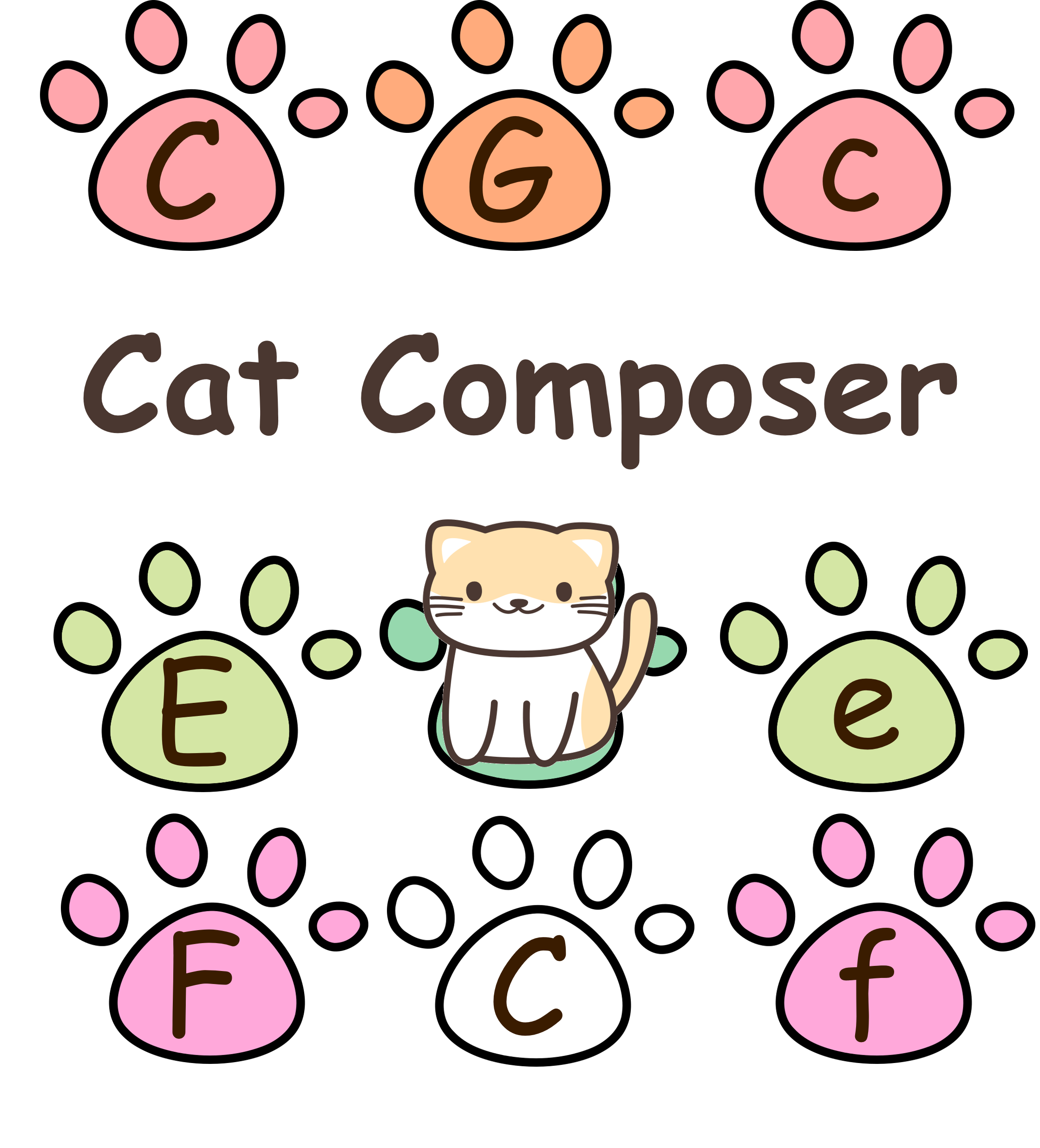
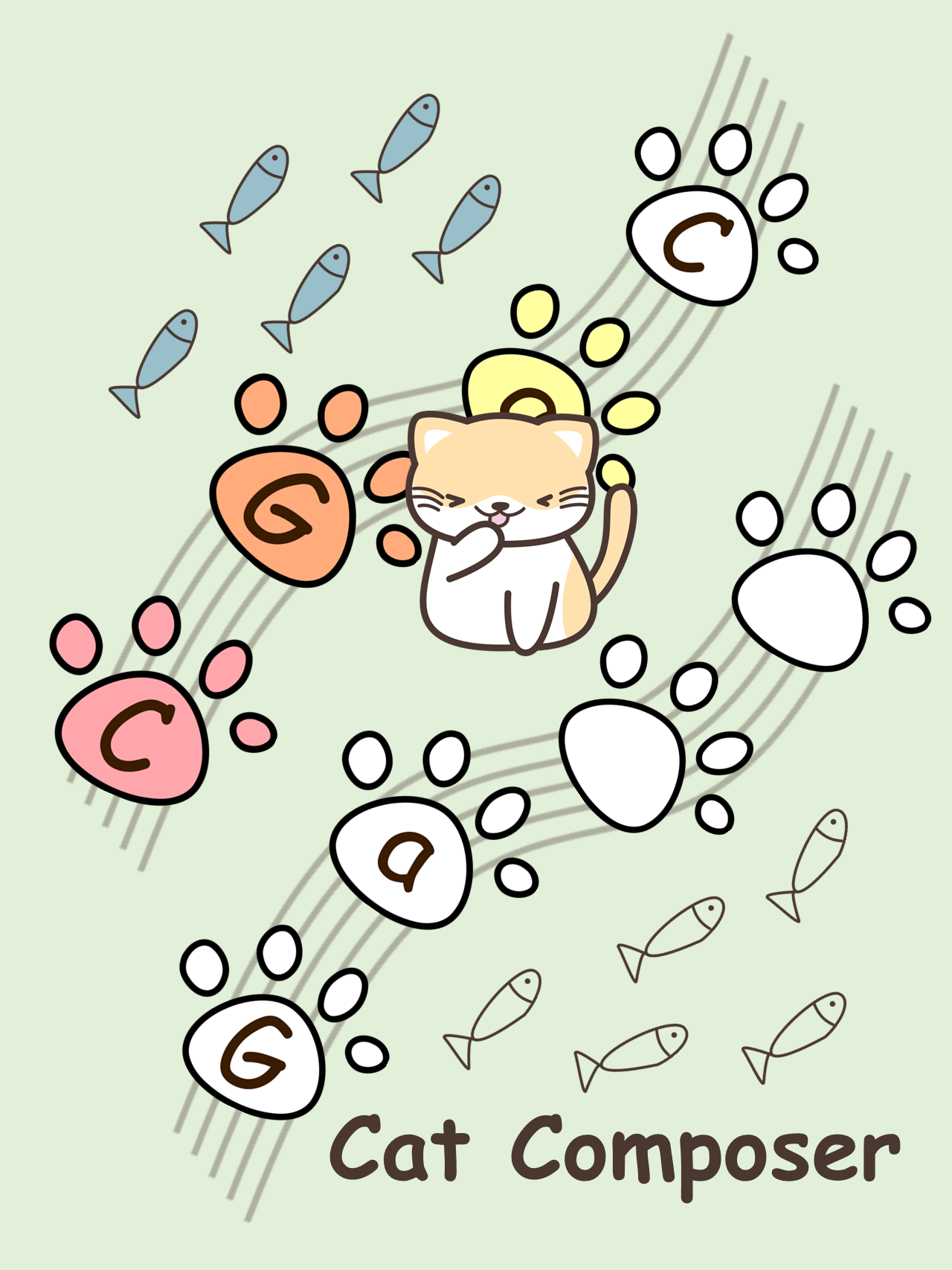
Cat Composer, is a music theory learning game for novices. The game is equipped with the idea of the Circle of Fifths and will offer you first experience on music composition!
Our main character is a yellow cat and her job is a composer. In detail, she is a guitar composer good at using the chords and arpeggios to construct the music pieces. Her forte is that she is able to produce one music measure when she takes a step forward. In her spare time, she likes to find her favorite snack, the dry fish, scattering in her backyard garden. She will be stepping onto the dry fish while she is composing the notes, and finally get the dry fish as a reward. The dry fish will be collected in a basket in her room.
Start to compose the music pieces by controlling our cat composer on the flower-shaped stage and helping her to get the dry fish!
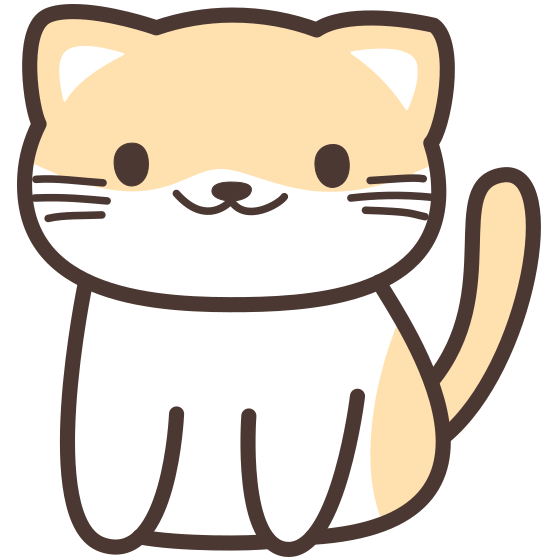
Learning Goal
- Able to read music notes
- Understand basic components of a music sheet
- Compose simple music pieces
Target Audience
- Non-music major students to increase the interst in the music theory knowledge, instrument performance, and composition
- Incoming music major students to understand the music theory foundation and the relationship between the performance and theoretical knowledge
Literature Review
The innovation of digital music games has attracted music educators' eyes nowadays. Researchers such as Duysburgh et al. (2015) draw lessons from formal music educators and design a digital music game so that students have more flexibility and creativity in exploring and experimenting the music sounds and instruments.
Marjie et al.’s (2016) guides us to design a music educational game that should include the feedback loop, a reward structure, several learning contents, an autonomous learning path, and the room for student creative practice. In our design, these functions are implemented.
Both the Marjie et al.’s and Duysburgh’s papers mentions the power of student creativity in music learning context. It meets the same opinion from Papert’s constructionism, as Papert thinks learning happens when learners are “diving into” the situation and combine the role of context, uses, and media with their learning experience (Ackermann, 2001).
Learning Support
Users should play this game with a Circle of Fifths picture putting on their table. Circle of Fifths is a relationship among 12 tones of the chromatic scale. There will be 12 keys and each of them involves a major and a minor. Users are suggested to decide the next notes based on the note position in the Circle of Fifths.
The six footprints appearing on the flower stage are decided by the Circle of Fifths. There will be a character, which is our “composer”, stepping on each key and make a sound. Usually the composer can only step onto the key which is close to his original position. Thus, there will be 6 keys with different color appearing on the screen. When the composer changes the key/location, the key close to him will also be changed. The composer will be allowed to compose a specific length of music piece. Within this period, s/he is allowed to create his/her own notes, chords, and arpeggios.
By interacting with the game and reading the Circle of Fifths table, users will be table to achieve our learning goal.
Game Description
The main character is a yellow cat and her job is a composer. In detail, she is a guitar composer good at using the chords and arpeggios to construct the music pieces. Her forte is that she is able to produce one music measure when she takes a step forward. In her spare time, she likes to find her favorite snack, the dry fish, scattering in her backyard garden. She will be stepping onto the dry fish while she is composing the notes, and finally get the dry fish as a reward. The dry fish will be collected in a basket in her room.
The objective of this game is to help the cat composer to get the dried fish gracefully. Player will construct the beautiful music using proper music theory knowledge.
Mechanics
A music composer game should have two functions: (1) it should allow players to compose the music; (2) it should allow players to listen to the music that they composed. Therefore, The clickable elements for player are concluded as two parts: (1) the six clickable music notes for composing, which are represented as the six footprints on the flower stage; (2) a play button for the audio playback, which is represented as the dry fish at the end of the garden path. Tapping on the six colorful footprints is the process of composing the music notes. In the example of the game page (Figure 4c), there are eight empty footprints on the path. It means there are eight music notes remains to be filled. After the eight music notes are filled, which means the music is composed completely, the dry fish becomes clickable. Now, tapping on the dry fish is the process of submitting the music piece to the background program.
The same footprint can be touched for multiple times. But if player touch another footprint, the music notes on the six footprints on the stage might be changed. Among the 12 notes in the music theory, only 6 will be presented at the same time on this stage. The appearance is depended on the circle of fifths (will be discussed in the following paragraphs). The designated note and its closest 5 notes are chosen.
For example, in Figure 3, Major C is the original center of the stage. After the cat jump to the Major G, Major G becomes the center, the six notes on the stage also change.
Dynamics
In the main game page, there is a flower-shaped stage where the cat is standing on and six footprints with music notes annotated. Below the stage, there is a path to the dry fish. There are five lines behind the footprints, it represents the five-lined musical notation. At the top of the path, there are empty footprints remained to be filled. At the end of the path, the dry fish is expected to be picked up by the cat.
Player can move the cat’s position by touching one of the footprints on the flower stage, then the cat will stand on the designated footprint. Meanwhile, a footprint on the path will be filled with the same note as what player touched.
After empty footprints on the path are all filled with colored notes, there will be a remind signal on the dry fish. Player can press the dry fish, and the cat will run on the path and then get the dry fish. Finally, the dry fish will be colored, and be collected into a basket. When the cat is running, the music piece is played synchronously following the footprints (music notes).
Aesthetics
The character design is out of the popularity of many famous cat characters: Neko Atsume: Kitty Collector, Karameru, and Klepto Cats. As to avoid the prejudice of gender preference, I use a cat as my main character of this game. I plan to design more cat characters in the future. For example, unlike this cat good at guitar composition, the next cat can be good at piano composition, and he/she can compose two music notes at the same time (represent left hand and right hand). The snack can be changed into fish can or catnip when the game goes to the advanced level. Thus, a cat character provides players a larger imaginary space.
For the overall stage pattern, I want to show players a cat dancing on the stage and generating a musical harmony. Next, I decided to make footprints as a representation of floor pattern, so players will know the cat can step on the footprints.
The path is a combination of five-lined notation and footprints. It both integrates the music theory and overall game background design.
From the aesthetic perspective, the Cat Composer aims to entertain the players who might be the cat lovers, or cute item collectors. The music theory is black-boxed so that music theory novices will not generate defensive feeling toward the game.
Game Sucesses and challenges
- Integrate Circle of Fifths method, learn it easier!
- Cat dancing on the flower stage, so cute!
- Interact with the cat composer, have fun!
- More cats, snacks, note playing methods (e.g. appreggio) will be released...
- Notes in different octaves will be considered (e.g. difference between C3 & C4)...
- An advanced note writing method under implementation...
Quotes you may like to know
The study of music theory interacts with intuition—honing, sharpening, and enhancing it with further insights and perceptions. -- Benward and Saker
The purpose of all music training is to teach for musical understanding (to preceive, organize, and then conceptualize what you hear) and consequently to learn how to create musical expression and how to develop a aesthetic response to that expression. -- Rogers
| Status | Released |
| Platforms | Windows |
| Author | janecomet |
| Genre | Educational |
| Tags | Cats, circle-of-fifths, music-composition |
Download
Install instructions
Environment Requirement
The game is developed on the Universal Windows Platform. It can run on the Windows 10 laptops and phones. The target Windows version is 1903 (10.0; Build 18362).
Follow the instruction to install the app package: https://docs.microsoft.com/en-us/windows/msix/package/packaging-uwp-apps#install-your-app-package-using-an-install-script
